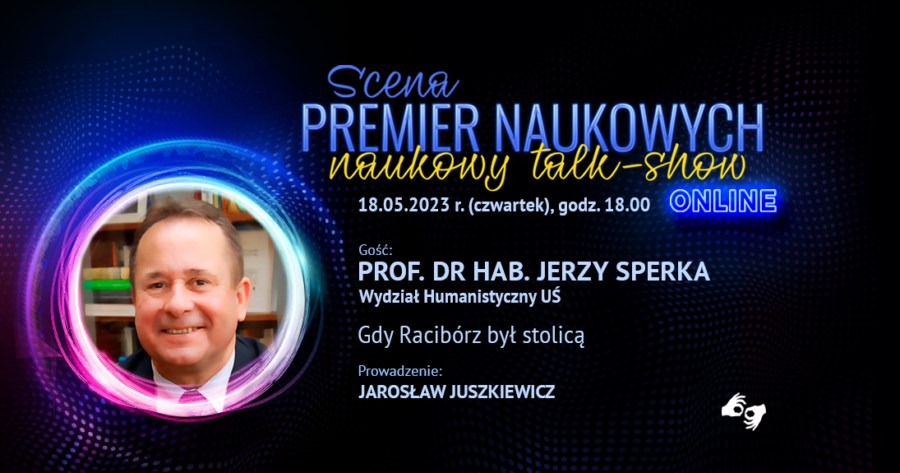| Tomek Grząślewicz |
On 18 May 2023, we invite you to embark with us on a journey in time and space. On that day, we will visit the western frontiers of the Silesian Voivodeship and reach back to the second half of the 13th century. During the 32nd episode of the Scientific Premiere Stage, we will host Prof. Jerzy Sperka, from the USil Faculty of Humanities, who will talk about people ruling over the medieval Duchy of Racibórz. The interview will revolve around his book Książęta i księżne raciborscy (1290/1291–1521) [Dukes and Duchesses of Racibórz (1290/1291–1521)] and take place in the heart of the former capital of the Duchy, at the Piast Castle in Racibórz.
Created by division
The Duchy of Racibórz appeared on the map as an aftermath of the fragmentation of the realm and consequent divisions into even smaller territorial units. It was given to Vladislaus I, the youngest son of Przemysław, who received the land as an autonomous region of the Duchy of Opole at the turn of 1290/1291. After that, the Duchy was writing its history for the next 230 years. It covered an area of approx. 2,400 km2, stretching from the capital itself, through Wodzisław, Rybnik, Żory, Mikołów, Pszczyna, and reaching as far as Mysłowice and the future Bieruń.
Between Czechia and Poland
The dukes of Racibórz ruled on the border between the two kingdoms and had to arrange their relations with Polish and Czech monarchs in various ways. Nicholaus II swore allegiance in Prague to John of Luxembourg, King of Bohemia, whereas John the Iron was a frequent guest on the court of Ladislaus Jagiello.
The book describes mainly the ‘great’ politics since that is what the chronicles and documents tell the most about. We can take a deep dive into the conflicts between bishops and dukes that could have eventually ended up in excommunication. There are also stories about invasions of troops plundering Silesia, liege homages, privileges, alliances, schemes and assassinations.
Life in the Duchy
The socio-economic background of the Duchy is presented in a no less intriguing way. We learn about chamberlains, lay judges, sub-judges, and Münzmeisters (heads of a mint). We observe not only the development of Racibórz—counting 3,000 dwellers in the 14th century—but also other towns of the Duchy such as Pszczyna, Rybnik, Wodzisław or Mikołów. New chapels and altars are founded in them, and women from the ruling dynasty enter monasteries. We discover, among others, what the coins minted in Racibórz looked like at the beginning of the 14th century, and which duke supported Żory weavers’ monopoly on cutting and selling wool.
The history that lasts
The line of Opavian Přemyslids ended in 1521 with the childless death of Valentin; the Duchy of Racibórz was merged with the Duchy of Opole and ceased its existence as a sovereign state. Interestingly, a new chapter of the story of one of the people described by Prof. Jerzy Sperka is being written: the beatification process of Princess Euphemia of Racibórz, the daughter of the first Duke of Racibórz, began last year
Straight out of the castle
The mentioned book Książęta i księżne raciborscy (1290/1291–1521) by Prof. Jerzy Sperka was published in the second half of 2022 by Wydawnictwo Avalon publishing house. Apart from the chronological presentation of the figures of the dukes, you can also find there a lot of photos of monuments and artefacts from the times of the Duchy’s splendour, such as the dukes’ seals
The meeting with Prof. Jerzy Sperka within the 32nd episode of the Scientific Premiere Stage takes place on Thursday, 18 May, at 6 p.m. It will be hosted by Jarosław Juszkiewicz. The event will be translated into Polish sign language.
Przypominamy, że dotychczasowe spotkania dostępne są na kanale YouTube UŚ.







